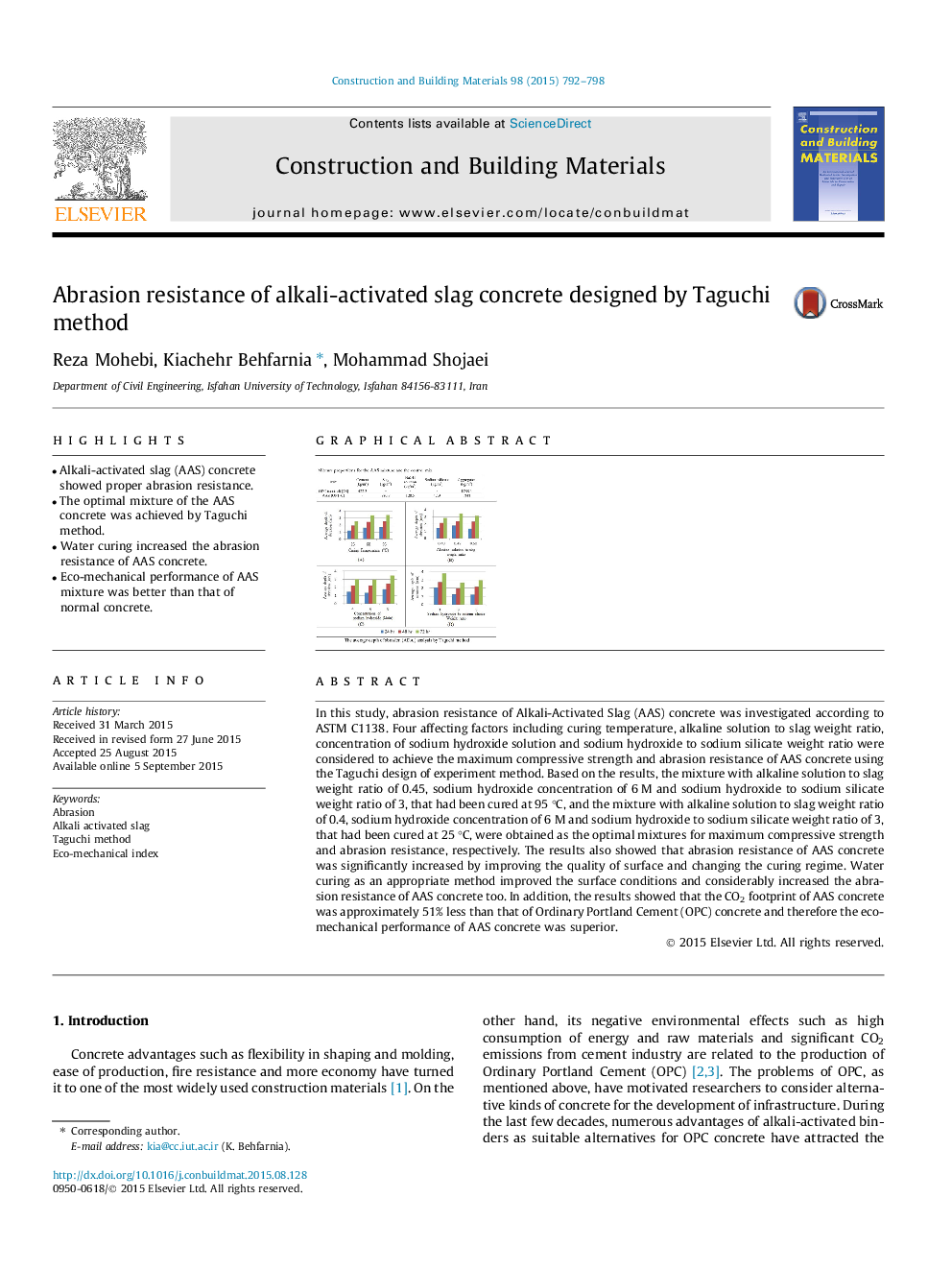| کد مقاله | کد نشریه | سال انتشار | مقاله انگلیسی | نسخه تمام متن |
|---|---|---|---|---|
| 256651 | 503557 | 2015 | 7 صفحه PDF | دانلود رایگان |
• Alkali-activated slag (AAS) concrete showed proper abrasion resistance.
• The optimal mixture of the AAS concrete was achieved by Taguchi method.
• Water curing increased the abrasion resistance of AAS concrete.
• Eco-mechanical performance of AAS mixture was better than that of normal concrete.
In this study, abrasion resistance of Alkali-Activated Slag (AAS) concrete was investigated according to ASTM C1138. Four affecting factors including curing temperature, alkaline solution to slag weight ratio, concentration of sodium hydroxide solution and sodium hydroxide to sodium silicate weight ratio were considered to achieve the maximum compressive strength and abrasion resistance of AAS concrete using the Taguchi design of experiment method. Based on the results, the mixture with alkaline solution to slag weight ratio of 0.45, sodium hydroxide concentration of 6 M and sodium hydroxide to sodium silicate weight ratio of 3, that had been cured at 95 °C, and the mixture with alkaline solution to slag weight ratio of 0.4, sodium hydroxide concentration of 6 M and sodium hydroxide to sodium silicate weight ratio of 3, that had been cured at 25 °C, were obtained as the optimal mixtures for maximum compressive strength and abrasion resistance, respectively. The results also showed that abrasion resistance of AAS concrete was significantly increased by improving the quality of surface and changing the curing regime. Water curing as an appropriate method improved the surface conditions and considerably increased the abrasion resistance of AAS concrete too. In addition, the results showed that the CO2 footprint of AAS concrete was approximately 51% less than that of Ordinary Portland Cement (OPC) concrete and therefore the eco-mechanical performance of AAS concrete was superior.
Figure optionsDownload as PowerPoint slide
Journal: Construction and Building Materials - Volume 98, 15 November 2015, Pages 792–798
